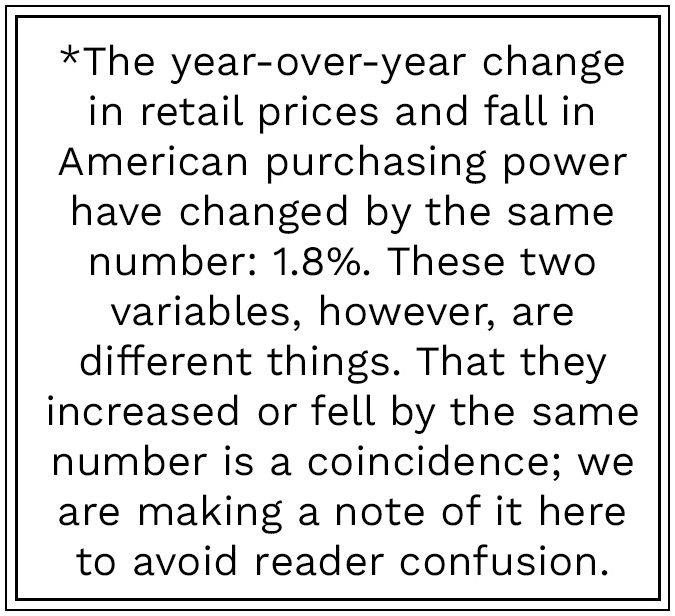Brand Loyalty Falters as High Inflation Continues, Study Finds

High inflation has made consumers cut back on everything but the necessities, and an unexpected characteristic has hit the chopping block: loyalty. PYMNTS’ data finds that about half of shoppers have made changes to where they shop for pricing relief, and approximately two-thirds of consumers consider price when choosing a go-to large retailer.
But what does that mean for merchants, and when might these winds shift back? PYMNTS’ “Consumer Inflation Sentiment Report” series has already found that deal chasing has become the way of life for U.S. consumers, and as a majority are expecting an imminent recession, these nascent trends may only be the beginning.
“Higher Prices Fuel a Deal-Seeking Competition” is the ninth installment of this series, and this latest edition analyzes the newest data to explore consumers’ anxious outlook on the American economy. We surveyed 2,136 United States consumers between March 2 and March 9 to better understand how inflation, increased prices and retailers’ responses have altered their shopping habits.
This is what we learned.
Finding deals has become much more important to consumers — a priority shift that has changed where approximately half of consumers choose to shop.
Half of consumers say finding a better deal has become a much more important factor than it once was when choosing where to buy retail or grocery items, with 44% of grocery and retail shoppers saying they would buy a different brand if it were less expensive than their favorite. Approximately half of the shoppers in each segment have shifted their purchasing to cheaper merchants in response to overall price increases, with 56% of retail shoppers saying they have moved at least some of their spending to less-expensive brands; 47% of grocery shoppers say the same.
Free? Of course.
You've uncovered one of our premium articles. Register to keep reading and receive free unlimited access to all our premium content.
For 18% of retail and 21% of grocery shoppers, switching brands has become the primary way they try to offset the impact of higher prices on their budgets.
Most shoppers say they are still experiencing numerous economic stressors. PYMNTS’ data finds that 61% of consumers express high levels of concern about the near-future economy and 57% say they expect an imminent recession. These expectations do not vary among consumers by age or income, suggesting that the target audience for any product or service has become wary about the future. Eighty-four percent of consumers worried about the near-future economic outlook say price increases drive their worries, while 45% say they are experiencing increased difficulty paying bills.
Walmart is the go-to store for cash-strapped consumers, who often credit low prices as their reason for shopping there.
Price influences 67% of shoppers when they choose their go-to large retailer, and one-third of shopping decisions are determined primarily by price. Forty-five percent of consumers who said Walmart was their preferred shopping alternative cited prices as their top reason, while 17% named proximity. Price is also the driving element behind the preference for other brands: 50% of Costco shoppers and 25% of Kroger shoppers prefer those stores because of pricing.
The most popular retailer was Walmart, which 41% of consumers say is their favorite retailer for groceries or retail products. This includes 56% of low-income consumers. Twenty-one percent of consumers said Amazon was their favorite retailer, especially higher-income shoppers — 26% of those annually earning more than $100,000 favor Amazon. About 30% of consumers prefer to shop at a retailer that is neither Walmart nor Amazon. Thirteen percent of consumers identified Target as their preferred store, while 10% said the same for Kroger.
Price will likely remain a key consideration when selecting stores and brands going forward, as consumers’ expectations of when inflation will return to normal have only moderated slightly.
They predict that inflation will not stabilize until October 2024.
The consumer experience for retail and grocery purchasing has diverged. Price hikes in some retail categories have started to subside, but most grocery categories are still averaging double-digit inflation rates.
The overall pace of retail price increases has dropped from 14% to 1.8% in the last 12 months. Much of the decrease in inflation can be attributed to the prices of automobiles and automobile parts beginning to moderate.
Four out of the five grocery subindexes, however, are still experiencing inflation rates of 10% or more. 
Consumers remain wary regarding prices: 68% of retail consumers expect retail prices to increase in the next year. That anxiety is more than a feeling in the retail sector, as the purchasing power of the dollar in this segment fell 1.8% during the six months preceding February 2022.*
As of February 2023, the year-over-year price changes are less than what they had been in February 2022 (7.9%) but remain much higher than the 2021 rate of 1.7%. Consumer Price Index data continues to gauge inflation at 6%, consistent with consumer expectations that inflation will take much more time to fall back to 2% than it took to reach peak levels.
Conclusion
As winds shift and consumers change their habits, new norms of commerce may well be getting established. Shoppers are leaning less on loyalty and more on price in their merchant selection, and should the recession they expect come to pass, it is likely that these tweaks to habits will be amplified. After all, though some consumers are simply strapped for cash, the desire to save money is a rational response to a seemingly irrational and unpredictable economy. Consumers are already redefining their retail and grocery shopping; merchants that are not already set up to capitalize on these behaviors will likely need to adjust — and fast.
Methodology
“Consumer Inflation Sentiment Report: Higher Prices Fuel a Deal-Seeking Competition,” produced independently by PYMNTS, examines and analyzes inflation’s impact on consumers and their habits. We surveyed 2,136 U.S. consumers between March 2 and March 9 about their experiences and perceptions. The sample was balanced to match the U.S. adult population in a set of key demographic variables. Our respondents’ average age was 48, 51% were female and 37% earned more than $100,000 annually.
Download the March 2023 report, “Consumer Inflation Sentiment Report: The False Appeal of Deal-Chasing Consumers,” and other previous editions of the series for more.
